Hudson Valley Chest of Drawers
Tasteful moldings and turned feet add quiet style to a sturdy dovetailed case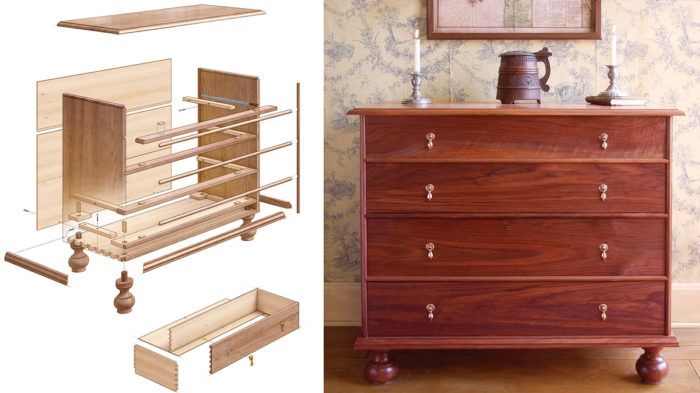
Synopsis: This Dutch-colonial style chest is modeled after one made by Val-Kill Industries, the furniture manufacturing program set up by Eleanor Roosevelt and friends in 1926 to create jobs and revive craftsmanship. The design is simple, the joinery straightforward, the moldings elegant but not overly complex. Sliding dovetails join the top and the drawer dividers to the case. Half-blind dovetails join the carcase sides to the bottom. The bun feet are turned, and the moldings are cut using a combination of power and hand tools.
A couple of summers ago while visiting Hyde Park, Franklin and Eleanor Roosevelt’s estate along the Hudson River north of New York City, I toured Eleanor’s getaway cottage two miles from the main house. In one of the bedrooms I came across a simple, handsome, and well-proportioned chest of drawers and instantly decided I’d like to make one for myself.
Like most of the furniture in the cottage, this Dutch colonial style chest was the product of Val-Kill Industries, a program Eleanor Roosevelt and three friends set up in 1926 to create skilled jobs for local people and to revive craftsmanship in woodworking, pewter casting, metalwork, and weaving. The cottage I was standing in, which Eleanor called home for the last decades of her life, originally served as Val-Kill’s workshop. The chest I admired, made of pine, was closely based on pieces produced by Dutch craftsmen of the Hudson Valley in the 17th century. The originals would have been made of local woods of varying quality—these were country pieces. Their joinery was strong and straightforward, solid without undue elaboration. And this Colonial-period directness was also reflected in the modest molding details of the piece, which are elegant but not overly complex. I chose to copy everything about the piece except the primary wood—I made mine in walnut, with pine as the secondary wood.
The long and short of sliding dovetails
The chest’s case has two sets of sliding dovetails—long ones joining the sides to the top, short ones where the drawer dividers meet the case sides. I began with the drawer divider dovetails, which are simpler. I made an MDF template with three slots and used it to cut the stopped sockets with a router and guide bushing. I roughed out the sockets with a 1⁄2-in.-dia. straight bit, then followed up with a 5⁄8-in.-dia. dovetail bit. To cut the tails to fit these sockets, I put a dovetail bit in the router table and ran the drawer dividers vertically against a high fence.
The long sliding dovetails that join the sides to the top take a little more finesse. Getting a long sliding dovetail to seat well along its entire length can be a challenge. Even if the dry assembly goes well, after you’ve applied glue and the wood has begun to swell, a long sliding dovetail will often hang up during assembly, prompting unprintable responses from the woodworker. The best way to ensure a tight fit and an easy assembly is to slightly taper the dovetail. You can taper both the socket and the key, but I find that tapering just the key works fine; this makes for a fit that is slightly loose most of the way in but tightens up nicely as you reach the last third of the joint.
For the full article, download the PDF below:



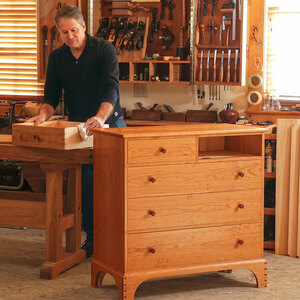
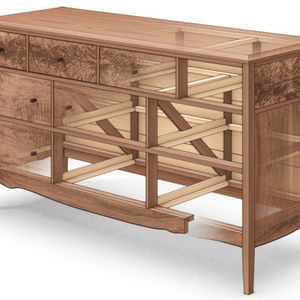

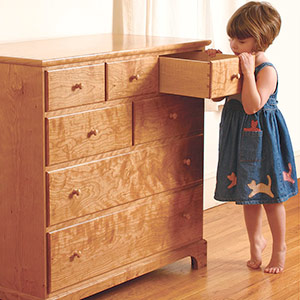






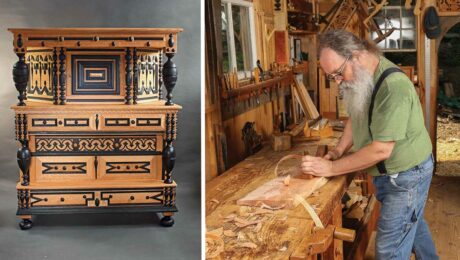








Comments
Will plans be available for this soon?
Log in or create an account to post a comment.
Sign up Log in